Scottish Marine and Freshwater Science Volume 5 Number 1: UK Ocean Acidification Coastal Monitoring Network - Expanding the Network - Defra Contract C5801/ME5309
The UK Ocean Acidification Programme (UKOA) funded a baseline study of carbonate chemistry parameters in UK waters. This report presents the results of the project.
Figures
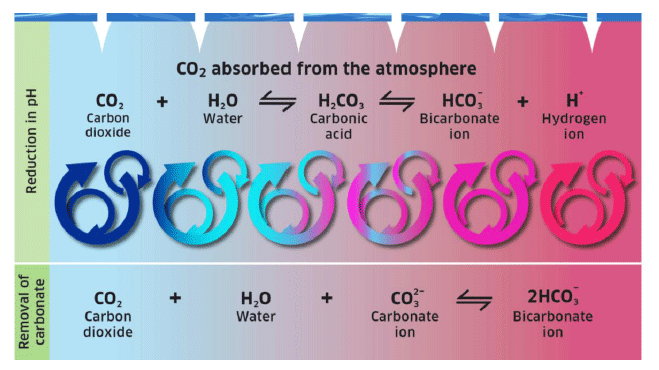
© Crown Copyright Marine Scotland
Figure 1: The carbonate system of seawater and the potential impact as a result of atmospheric absorption of CO2. Source: Baxter et al (2011). This is a 'litmus paper' diagram; the colour changes from blue to red as more CO2 is absorbed and the carbonate equilibria shift to release more hydrogen ions.
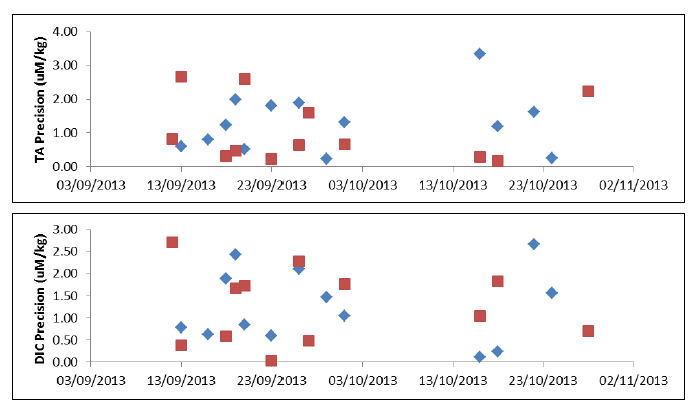
Figure 2: Precision of the DIC and TA analysis, for Vindta 11 (blue diamond) and Vindta 24 (red square), assessed using three previously analysed standards at the start of each day of analysis.
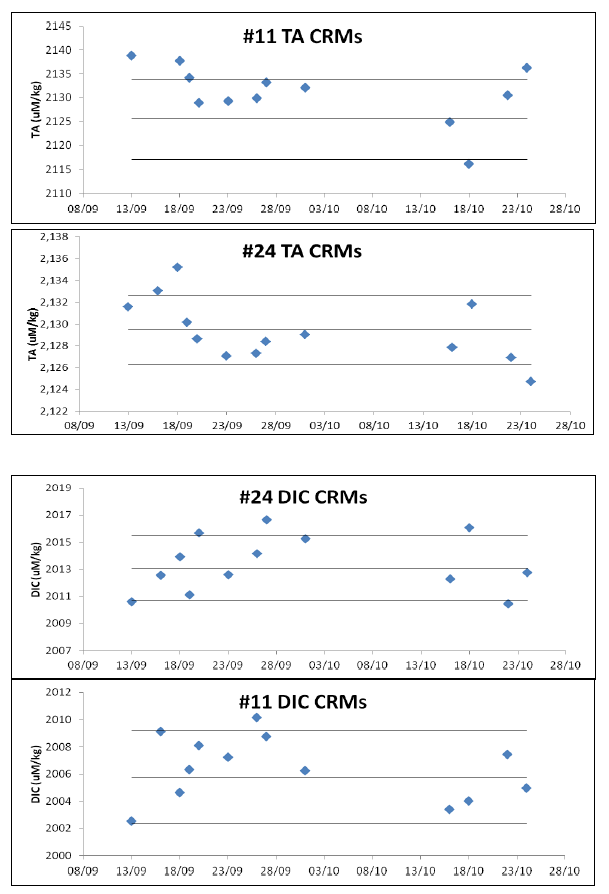
Figure 3: The first reference material analysed each day was used to calculate the sample correction value for DIC and TA. The three lines correspond to mean concentration (centre line) and +/- 1SD of the mean.
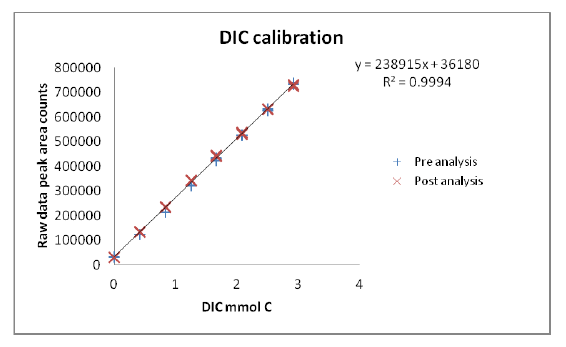
Figure 4: Feasibility studies - Combined pre and post calibration data used to determine DIC concentrations in discrete and moored samples.
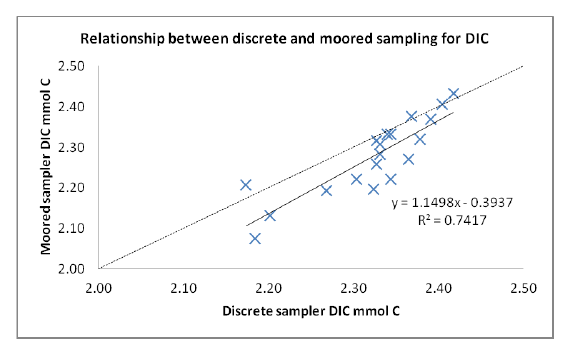
Figure 5: Feasbility study - Relationship between discrete and moored sampling for DIC. The dashed line represents a 1:1 comparison and the solid black line is the regression slope fitted to both data sets.
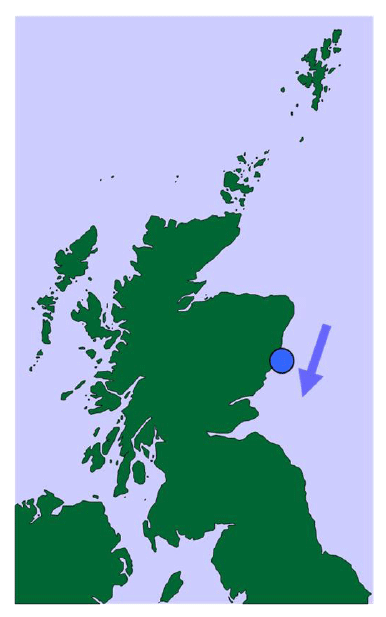
Figure 6: Stonehaven sampling site located ~25 Km south of Aberdeen and 5 Km offshore. The water depth at the site is ~ 50 m with a southerly current.
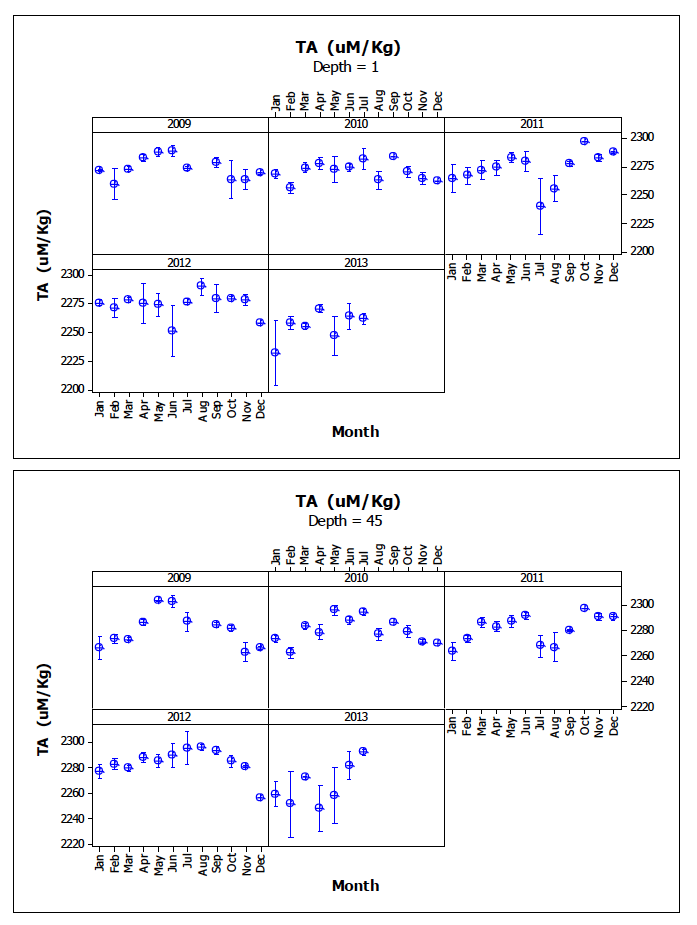
Figure 7: Total Alkalinity ( TA) plot of Stonehaven dataset (2009-2013) from samples collected at the surface (1m) and just above the seabed (45 m). The error bars correspond to 1 standard error of the mean. A strong seasonal cycle was observed until 2012 when increase in TA concentration was observed.
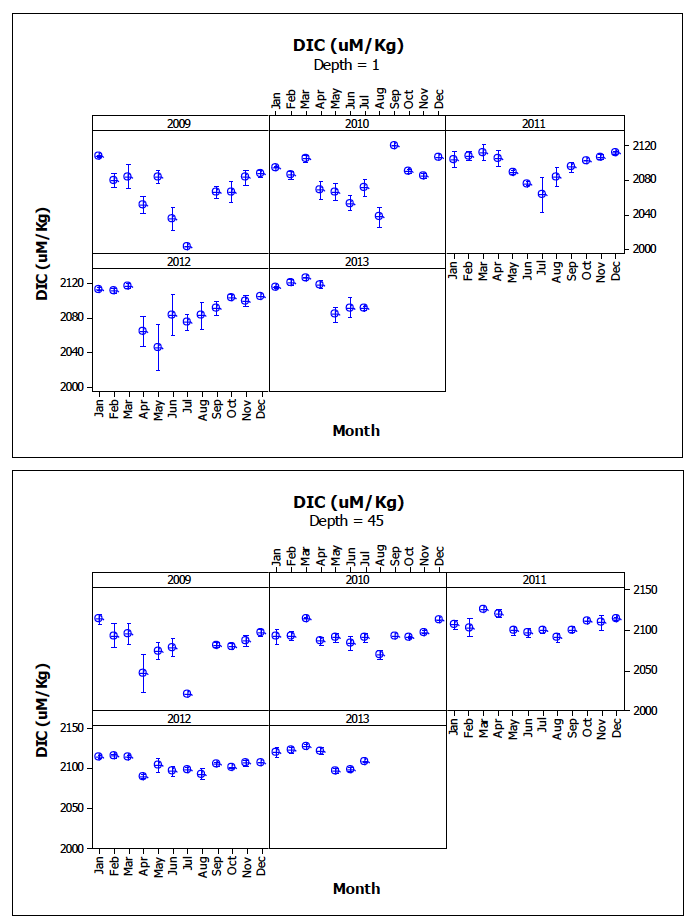
Figure 8: Dissolved inorganic carbon ( DIC) plot of Stonehaven dataset (2009-2013) from samples collected at the surface (1 m) and just above the seabed (45 m). The error bars correspond to one standard error of the mean.
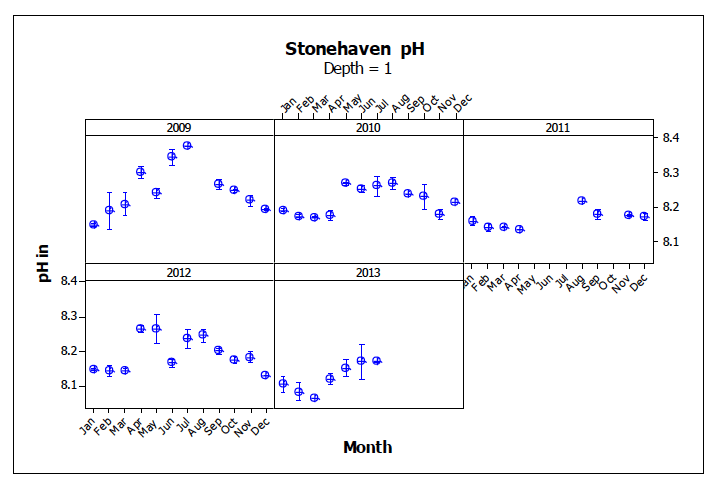
Figure 9: pH at Stonehaven (2009-2013) from samples collected at the surface (1 m). The pH was calculated using CO 2SYS (version 2.1).
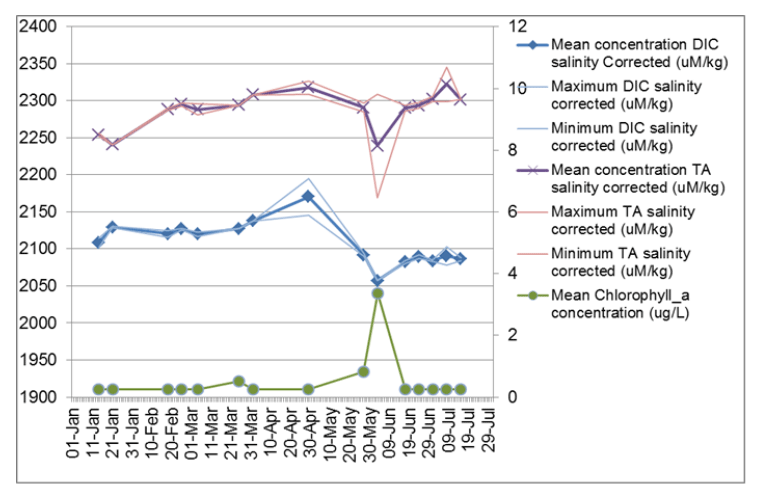
Figure 10: Dissolved inorganic carbon ( DIC, blue) and total alkalinity ( TA, red) concentrations (µM/kg) for the Minch North for the first half of 2013. Also plotted chlorophyll-a (Chl_a, green), in µg/L.
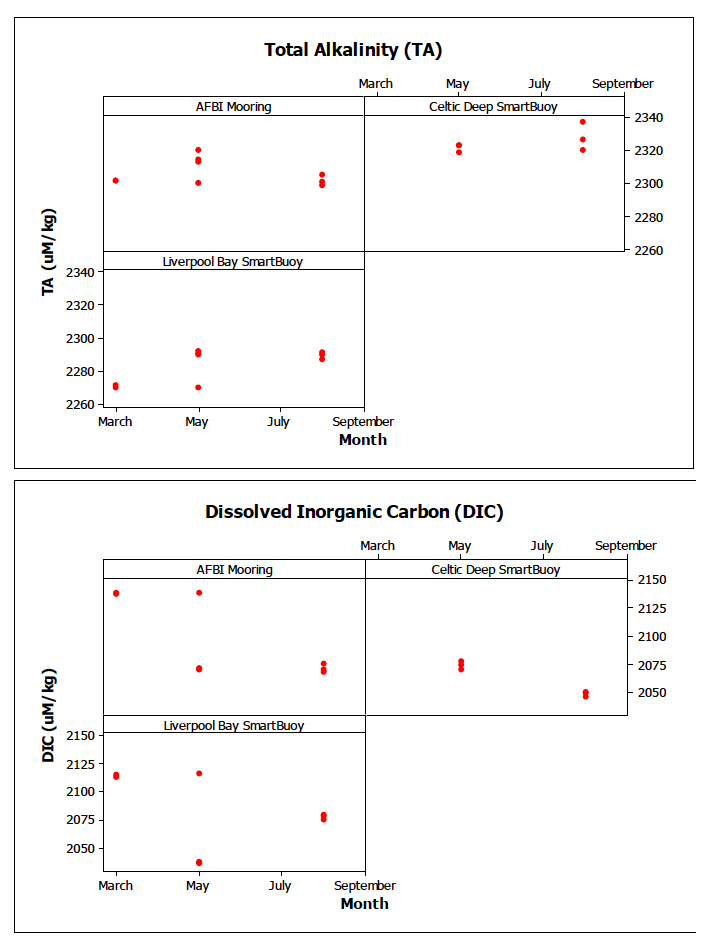
Figure 11: Dissolved inorganic carbon and Total Alkalinity from discrete water samples collected at three buoy sites ( AFBI, Celtic Deeps and Liverpool Bay) during the first half of 2013.
Contact
There is a problem
Thanks for your feedback